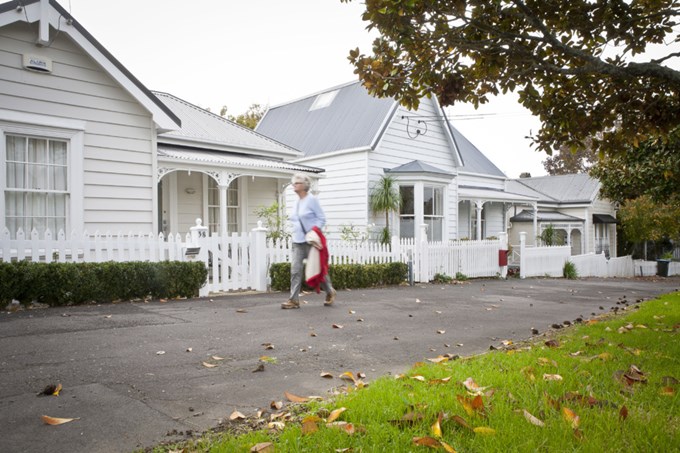Tommy Honey, the Dean of College at Whitecliffe College of Arts and Design, talks to OurAuckland about potential solutions to Auckland’s housing challenges.
The opinions expressed below are Mr Honey’s alone.
What can we learn from the design of older inner-city Auckland suburbs like Ponsonby and Grey Lynn?
These suburbs, along with Aro Valley in Wellington, are where you find residents who are most passionate about preserving their neigbourhoods due to their historic importance.
But the way these suburbs were formed was largely decided by a builder or developer who decided what and how to build. Regulations didn’t exist and neither did input from architects or design experts.
A developer or builder built three homes in a row that looked the same, sold them, then built another three. So developers helped shape the city and the sort of housing that people love today.
Are you arguing for the removal of building regulations?
Not necessarily. But Auckland of the past was a no-zoned paradise. Property developers were looking to maximise their return and worked out that you could build a foot away from your neighbour – and that was the most cost-effective thing to do. In Sydney, there wasn’t even a gap between homes, and those houses are extremely desirable and valuable today.
In Houston, Texas, they don’t have zoning at all. Well, sort of.
But while Houston doesn’t have zoning laws, developers have a role in how the city looks through what they call deed restrictions.
What we’re finding with the current situation in Auckland is that the people who set the regulations aren’t as innovative as developers. Developers know what people want from the marketing of homes.
What we’re seeing is that those who set restrictions are doing so through guessing what they think other people need.
What will the proposed Unitary Plan achieve?
The reason house prices are so high in Auckland is that land supply has been constrained by zoning regulations. The Unitary Plan has the goal of trying to open up zoning, so there’s adequate land supply for housing. It’ll mean, for example, if you’ve got a section of 600 square metres, you can build two homes on it instead of one.
How did we get to a place where the average house price is nine or 10 times an average annual income?
If you go back before the Super City, we had seven different cities within Auckland, each of which had their own separate set of rules for house building. Not one had a region-wide responsibility for planning for population growth.
So the planner in Manukau had no remit to look at likely population growth in the North Shore and what kind of housing might be needed to accommodate that growth. They couldn’t have influenced that even if they’d wanted to.
But now we have everyone sitting under the same roof, the planners, infrastructure, transport planners and that is what we need to get it right.
So the Unitary Plan is simply a means to set consistent regulations across the region.
Are residents right to be fearful of change? Will greater densities lead to the reduction of property prices for those about to enter their retirement, for example?
What people don’t understand is that the Unitary Plan will take a few years to flow through, once it’s complete. Their neighbourhoods won’t change overnight; they probably won’t change for generations.
People fear that once the Unitary Plan is released, the next day the bulldozers will roll into Remuera, and that’s just not going to happen.
Another point that people don’t understand is that development will make some types of housing rarer and unique, for example a big single house on a section. Their scarcity will ensure that they remain more valuable over time.
They go up in value, not just monetarily, and so preservation is enabled by the development that happens elsewhere. And we’re only talking two or three-storey developments. Talk of anything more extreme is simply scaremongering.
Tommy Honey is a director, designer, educational manager, and architect. He is Dean of College at Whitecliffe College of Arts & Design and the resident urbanist on Radio New Zealand’s Nine-to-Noon programme.


